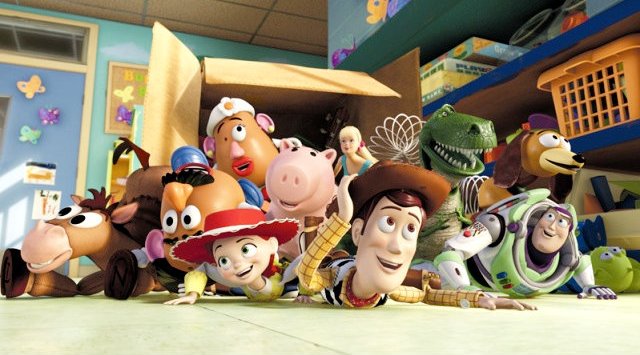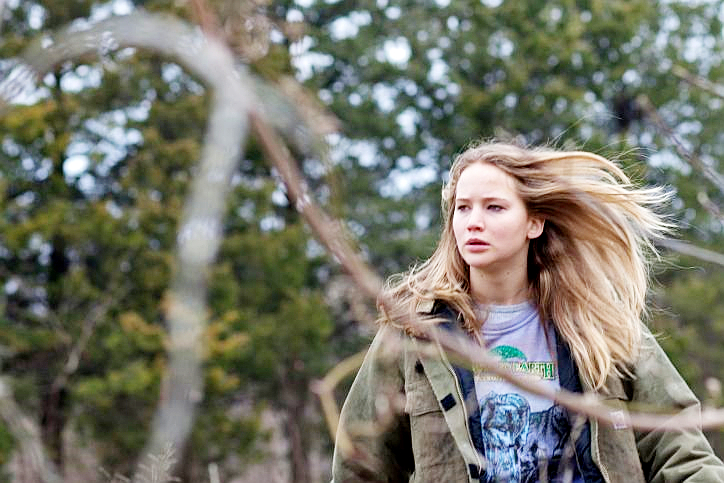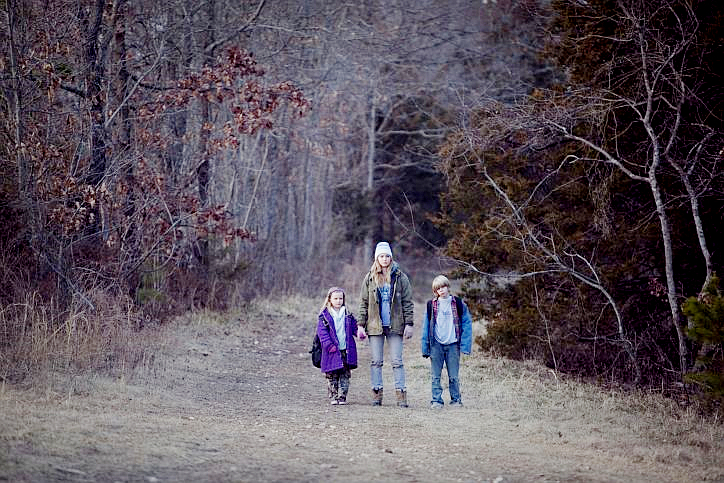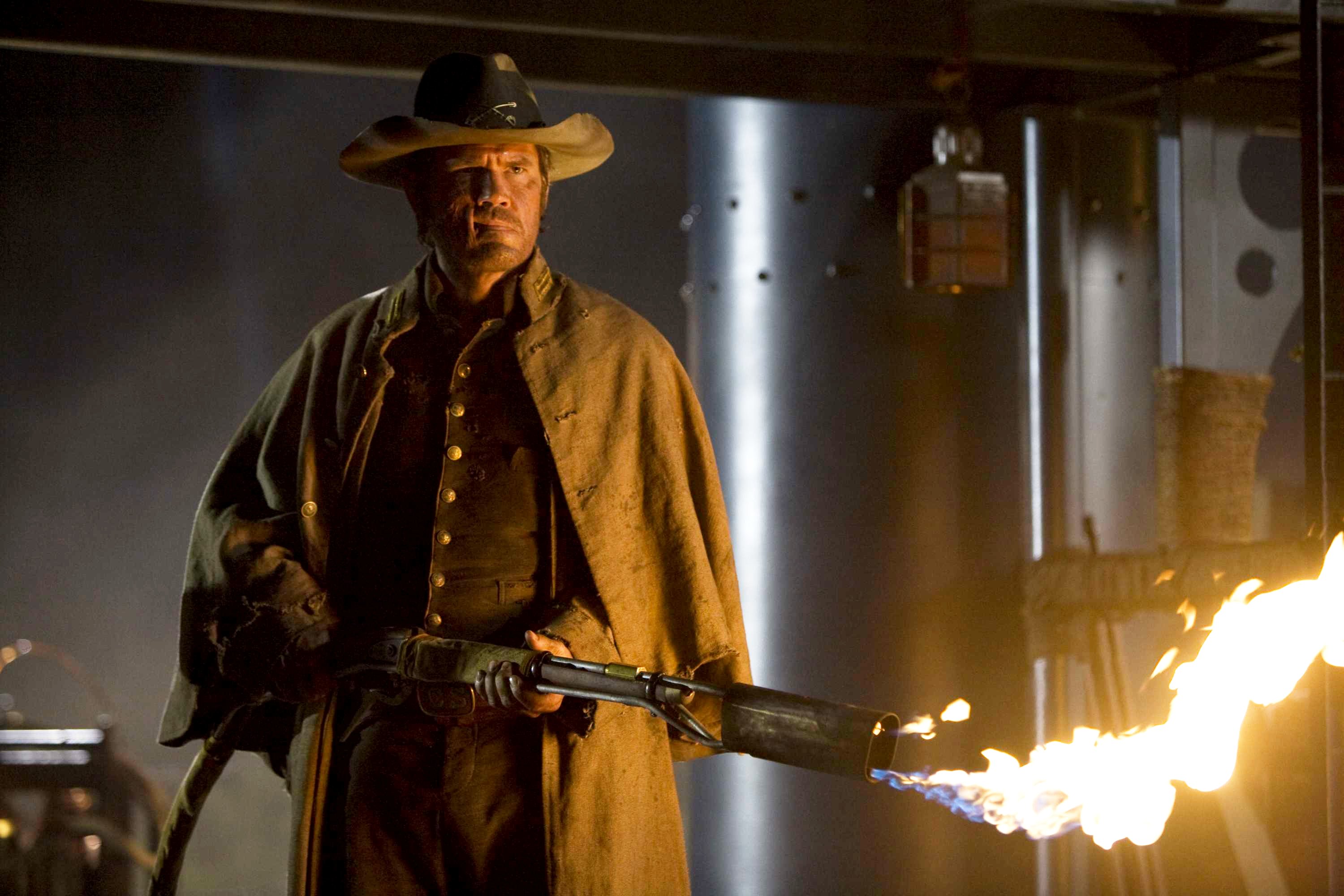
“
There’s not even room enough to be anywhere. It’s not dark yet, but it’s getting there.” To get right to the point,
Lee Unkrich’s heartfelt and exquisitely melancholy Toy Story 3 is fully up to the standard of excellence we’ve come to expect from both
the franchise and Pixar, and it’s easily one of the best films of the year so far, right up there with
Red Riding and
The Secret in their Eyes. But, honestly, what is it with John Lasseter’s team at Pixar that they seem to be so obsessed with questions of transience and mortality?
With WALL-E, we got, in its better hour, a robot love story set among the dusty, trash-ridden ruins of a forgotten Earth. With Up, we got, in its best ten minutes, the story of a romance from childhood to the final parting of the ways. And, now we have Toy Story 3, where even those unaging plastic heroes from Andy’s toy chest — Woody, Buzz Lightyear, and the rest — are contemplating that last round-up in the sky. And from utopian visions — that don’t quite pan out — of a toy heaven (a community center where the toys get played with every day) to the fiery furnaces of toy Hell (you’ll know it when you see it), Toy Story 3 has more tearful farewells and ruminations on death than any pop movie this side of Return of the King.
In fact, the film — which, don’t get me wrong, is pretty close to a masterpiece — starts grim (that is, after two cartoon reveries, one an amazing short entitled Day & Night; the other a romp through the toylands of the Old West) and gets grimmer. For, ten years have passed since the first film, l’il Andy is all grown up now, and this soon-to-be college-man has put away childish things…which leaves our heroes forgotten in the toy chest, feeling abandoned and forlorn. So, after memories of bygone days and an enumeration of those who have already succumbed to the Great Plastic Dark (Wheezy, Mr. Shark, Little Bo Peep), Woody (Tom Hanks) tries to rally the flagging spirits of his fellows by singing the praises of attic-life. And, if a golden senescence in the musty confines of the attic doesn’t sound all that great, well, it’s vastly more preferable to being tossed out in the trash-heap, isn’t it?
But, eventually, other options emerge. Andy seems to mark Woody — and Woody alone — to make the trip to college with him, where he’ll no doubt spend four years resting ironically between the beer cans and lava lamp, aghast at the new ways in which Andy spends his time. Meanwhile, Buzz (Tim Allen), Jessie (Joan Cusack), and everyone else, after some mishaps about Andy’s intentions, eventually get consigned to the Sunnyside Community Center, an Edenic establishment overflowing with young children and old toys — including most notably a Ken (Michael Keaton) to Andy’s sister’s Barbie (Jodi Benson) — and administrated over by a kindly pink teddy named Lotso (Ned Beatty), short for Lots-O’-Huggin’ Bear.
Did I say kindly? Um, well, he seemed kindly. But, beneath that fuzzy pink exterior lies a broken heart, filled with cold, calculating malice. (Chuckles the Clown, a despondent fellow that Woody encounters on his travels, fills us in on the whole story.) It appears Lotso and his eventual muscle, Big Baby, were once inadvertently left — and very quickly replaced — by the parents of his young owner Daisy. And this unfortunate event, alas, cleaved this bear’s soul in two and made him, from now until time immemorial, a satellite of hate. Better to reign in Sunnyside than to serve another cruel mistress like Daisy! If Lotso cannot be loved by humans, then he will be feared by toys — and woe be unto those who dare threaten this Huggin’ Bear’s domain, for they shall know the wrath of…the toddlers.
So, yeah, like I said: Even amid all the pastel colors, this film is surprisingly dark. Already, Toy Story 3 is as wistful about childhood’s end and the inexorable passage of time as Where the Wild Things Are (although it’s not nearly the abortive emo-fest that Spike Jonze’s film sadly turned out to be.) Even in basically throwaway elements, like the family dog having obviously reached his eleventh hour, the film keeps reminding you over and over again that everything is finite, and nobody — not even toys — gets out alive. And then you throw in the Shawshank Redemption and Lotso-the-Cheneyite aspects of Sunnyside and we’re delving into even creepier territory.
As I said of Neil Gaiman and Henry Selick’s Coraline, in general I think kids can handle — and probably really dig — dark, scary fare. But here we have a Toy Story featuring not one, but TWO, interrogation-and-torture scenes. Isn’t this all a bit much for little kids? (Of course, now that I think about it, Empire has two also, and I loved the hell out of that movie at a young age.) Who knows? Maybe all the moral and temporal grimness shoots right over kids’ heads. As I said in my WTWTA review, “I just don’t get the sense that nine-year-old children really spend a lot of time pondering things like the Finite, their feelings, or their soon-to-be-lost innocence. They live in the moment. They just are.”
And, it’s true, this production is much more fun than WTWTA as it zips along, so maybe kids will ignore most of the sad stuff and really dig it. But, speaking as a thirty-five-year-old adult, and even one who’s fully ok with keeping the toys of youth around, the despondency throughout the story becomes cumulative. I really liked Toy Story 3 — In a way, I kind of loved it. But I was not expecting such a wistful and lachrymose tone going in, or to be so choked up by the end. I thought I was in for another eye-popping lark with Woody, Buzz, and the ole gang. Instead, I got an eloquent, expertly-made, and very, very melancholy testament to the rather depressing notion that old toys and old memories never die. They just…fade…away…








